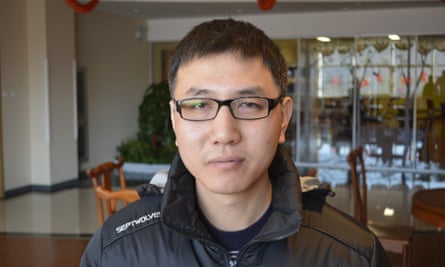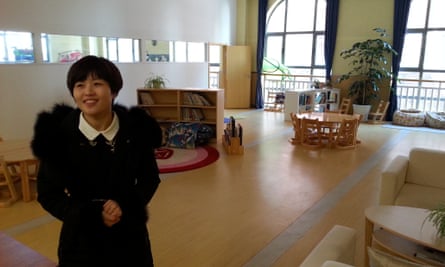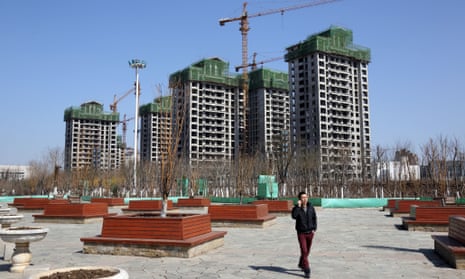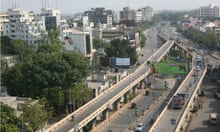Wang Lin needed a change. The crushing air pollution and gridlock traffic in his hometown Hangu, an industrial district in China’s northern metropolis of Tianjin, made him anxious and sometimes sick.
Then he heard about the Sino-Singapore Tianjin Eco-city. According to its marketing, the £24bn development – a joint venture between the governments of China and Singapore – will one day be a “model for sustainable development” only 40km from Tianjin’s city centre and 150km from central Beijing. To Wang, it sounded like paradise.
Last year, the 36-year-old moved into an inexpensive flat in one of the city’s half-occupied apartment blocks. As a freelance translator, he doesn’t mind that most viable employers are at least half an hour away by car. He loves the relatively clean air and the personal space. But he also has his complaints.
By the time the city is complete – probably by 2020 – it should accommodate 350,000 people over 30 square kilometres. Five years into the project, however, only about three sq km have been completed, housing 6,000 permanent residents. There are no hospitals or shopping malls. Its empty highways traverse a landscape of vacant mid-rises and dusty construction yards.
“This place is like a child – it’s in a development phase,” Wang says. “But it’s chasing an ideal. It’s the kind of place where people can come to pursue their dreams.”

Last month, China announced its new urbanisation plan, a massive feat of technical and social engineering which will move more than 100 million country-dwellers into cities over the next six years. The question is how. China’s current development model has proved environmentally disastrous; ghost cities and towns have triggered fears of an impending real-estate meltdown.
Chinese authorities began encouraging the construction of “eco-cities” in the middle of the last decade; since then, hundreds have sprouted across the country. While the concept is vaguely defined, most eco-cities are built on once-polluted or non-arable land, comply with stringent green architectural standards, and experiment with progressive urban planning and transportation infrastructure. The catch is that they simply may not work – if, indeed, they get finished at all.
According to Neville Mars, a Shanghai-based architect who is writing a book about eco-cities, Tianjin has an advantage because of its proximity to a major metropolis and shipping hub: “It’s already proving to be successful, because it’s still building.”
Many other ambitious eco-city projects – including Hebei province’s Caofeidian, once considered the crown jewel of the movement – have ground to a halt. The problem, says Mars, is the “new city model” – the goal of building a whole city from the ground up rather than letting it develop organically. “You can want to design your urban landscape, but in reality, on a fundamental level, that’s impossible,” he said. “We have to acknowledge that it's extremely hard to build a regular city from scratch.”
Furthermore, some experts say that certified green buildings and pedestrian-friendly roads are a worthless patch for China’s environmental woes, not a solution. “Chinese people use a lot of coal because it’s very cheap,” says Tao Ran, acting director of the Brookings-Tsinghua Centre for Public Policy. “If coal doesn’t become much more expensive, then enterprises won’t use more green energy.”

At present, the Tianjin Eco-city feels more like a simulacrum of a viable community than the real thing. Its buildings are designed to the world’s most stringent environmental standards, but they stand mostly unused.
“The idea is to ensure that what we build here is commercially viable,” says Ho Tong Yen, chief executive of the city’s master developer. “It should not be an expensive project funded mainly through government subsidies.” Over the past year, he says the project has made strides, selling about 400 housing units a month – a rate which Ho describes as “healthy”. President Xi Jinping visited last May; in January, the city’s developers presented to the United Nations in New York.
“If you ask me what is most unique about Tianjin Eco-city," Ho adds, "it is the comprehensiveness with which we are tackling the question of sustainability in the development of a city.”
On an official city tour, assistant public relations manager Gang Wei walks through a sparkling – yet unoccupied – glass-and-steel office building, enumerating its environmental advantages. Nearly a third of its energy comes from turbines and solar panels, he says; its stairs wind up through the centre of the building, encouraging occupants to shun the elevator.
Yet while the developer claims that more than 1,000 companies have registered in the city, many storefronts on its main shopping plaza stand empty; two frozen escalators lead to a mostly-vacant upper floor. In the middle of the afternoon its few occupants – a noodle joint, a coffee shop, a Japanese restaurant advertising “suisi”– are padlocked. Although the city’s first food market opened last November, it’s still limited to a few well-stocked produce stalls. The massive space echoes like a gymnasium.

At one of the city’s three schools, the red-brick Ivy Mi Kindergarten and Primary School, office manager Xu Wenjiao stands in a sun-drenched front lobby more befitting a wealthy tech startup than an educational institution. Xu says that tuition costs only about £40 a month, compared with more than twice that in central Tianjin. “It’s to encourage people to move here,” she says. “Investors want homes occupied.”
Xu strides through pristine hallways, opening doors to a music room, a spacious kitchen, a library furnished with beanbag chairs and potted plants.
“This is our garden,” she says, pointing out of a window at the school’s backyard – a small brick terrace dotted with dry plots of brown earth. Behind the garden is a low wall, plastered with English phrases like “the seeds of fresh life, new bungalow” and “fresh air, bright sunshine, broad view, free breath”. Beyond that, a construction yard stretches into the distance. The air reverberates with the thwacking sound of a pile driver.
It is a familiar sound in Tianjin. With support from the central Chinese authorities, the municipality has shaped its outlying areas into an endless sprawl of showcase projects. Beyond the eco-city lies an ersatz ancient town, a free market zone with its own football team, and a half-built financial centre which, according to its developers, will someday rival Manhattan. Construction is everywhere; people are scarce.
Xu turns around and opens a door into a classroom, where brightly-dressed primary school children are busy finger-painting, reading books and building block castles. “Notice that they’re all doing their own activities,” she says. “We know it’s best to let every child develop in her own way.” In Tianjin Eco-city, the future is a blank slate.




Comments (…)
Sign in or create your Guardian account to join the discussion